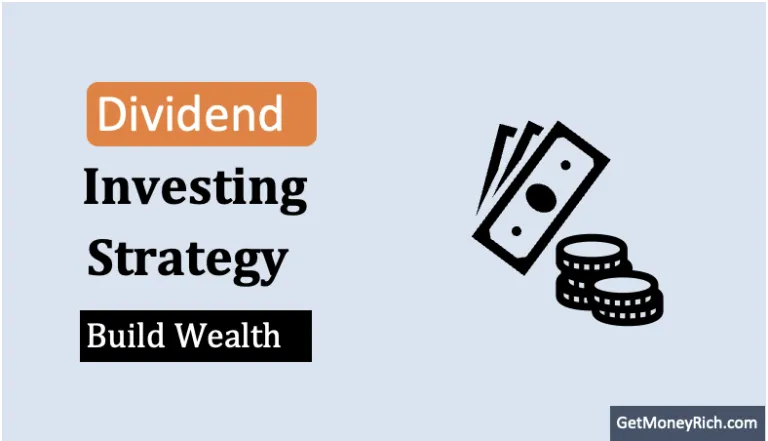
In an era where financial independence is a key goal for many investors, dividend investing has emerged as a powerful strategy for generating passive income. Whether you’re a beginner looking for steady cash flow or a seasoned investor aiming for long-term wealth accumulation, dividend stocks offer a reliable income stream. In this article, we’ll explore the fundamentals of dividend investing, its benefits, and how you can build a successful dividend portfolio.
What is Dividend Investing?
Dividend investing is a strategy where investors buy stocks from companies that regularly distribute a portion of their earnings as dividends. These payments can be received quarterly, semi-annually, or annually, providing a consistent source of passive income. Unlike growth stocks, which reinvest earnings into expansion, dividend stocks return value directly to shareholders.
Types of Dividend Stocks
- Dividend Aristocrats – Companies that have consistently increased their dividend payouts for at least 25 years.
- High-Yield Dividend Stocks – Companies that offer higher-than-average dividend yields, often exceeding 4-5%.
- Dividend Growth Stocks – Companies with a history of steadily increasing their dividends over time.
- REITs (Real Estate Investment Trusts) – Businesses that generate revenue through real estate and pay high dividends due to legal distribution requirements.
Benefits of Dividend Investing
1. Passive Income Stream
Dividends provide a regular income stream without requiring active involvement, making it an excellent strategy for retirees and financial independence seekers.
2. Long-Term Wealth Accumulation
Reinvesting dividends through Dividend Reinvestment Plans (DRIPs) allows investors to purchase more shares over time, leading to compounding growth.
3. Lower Volatility
Dividend-paying stocks tend to be less volatile than high-growth stocks, making them ideal for conservative investors looking for stability.
4. Inflation Hedge
Companies that consistently increase their dividends help protect purchasing power by keeping up with inflation.
5. Tax Advantages
In many countries, qualified dividends are taxed at lower rates compared to ordinary income, providing additional financial benefits.
How to Start Dividend Investing
1. Identify Strong Dividend Stocks
Look for companies with:
- A history of consistent dividend payments
- Low payout ratios (below 60%) to ensure sustainability
- Strong earnings growth and solid balance sheets
2. Diversify Your Portfolio
Avoid relying on a single stock or sector. Diversify across industries such as technology, healthcare, consumer goods, and financials to minimize risk.
3. Use DRIPs for Compounding Growth
Opt for dividend reinvestment plans to automatically purchase additional shares and accelerate portfolio growth.
4. Monitor and Rebalance
Regularly assess your portfolio to ensure that the dividend stocks continue to perform well and meet your investment goals.
Common Mistakes to Avoid
- Chasing High Yields: Stocks with extremely high yields (above 10%) may be unsustainable and risky.
- Ignoring Fundamentals: Always analyze financial health before investing.
- Overconcentration in One Sector: A well-balanced portfolio reduces sector-specific risks.
Conclusion
Dividend investing is a proven strategy for generating passive income and achieving long-term financial growth. By selecting strong dividend-paying companies, reinvesting earnings, and diversifying your portfolio, you can build a steady income stream while growing your wealth. Start your dividend investing journey today and enjoy the financial benefits for years to come!
Read More: https://wealthfitlife.com/10-investment-mistakes-that-could-wreck-your-wealth/
FAQs
- What is dividend investing, and how does it work?
Dividend investing involves buying stocks of companies that regularly pay dividends, providing investors with a steady income stream. - Why should I consider dividend investing for passive income?
Dividend investing offers consistent cash flow, potential capital appreciation, and reinvestment opportunities for long-term wealth building. - What are the best types of stocks for dividend investing?
Look for dividend aristocrats, blue-chip stocks, and companies with a history of stable and increasing dividend payouts. - How do I choose the best dividend stocks?
Analyze a company’s dividend yield, payout ratio, earnings growth, and financial stability before investing. - What is the difference between dividend yield and dividend payout ratio?
Dividend yield measures the return on investment from dividends, while the payout ratio shows what percentage of earnings is paid as dividends. - How can I reinvest dividends to maximize returns?
You can use a Dividend Reinvestment Plan (DRIP) to automatically reinvest dividends into additional shares, compounding your returns over time. - Are dividend stocks better than growth stocks?
Dividend stocks provide income and stability, while growth stocks focus on capital appreciation. The best choice depends on your financial goals. - What are the risks of dividend investing?
Risks include dividend cuts, market volatility, company underperformance, and economic downturns impacting payouts. - How much money do I need to start a dividend portfolio?
You can start with any amount, but a diversified portfolio with multiple stocks will yield better long-term results. - Can I live off dividends alone?
Yes, but it requires careful planning, a sizable portfolio, and reinvestment strategies to sustain a reliable passive income stream.

Pingback: How to Build a Strong Financial Foundation - WealthFitLife